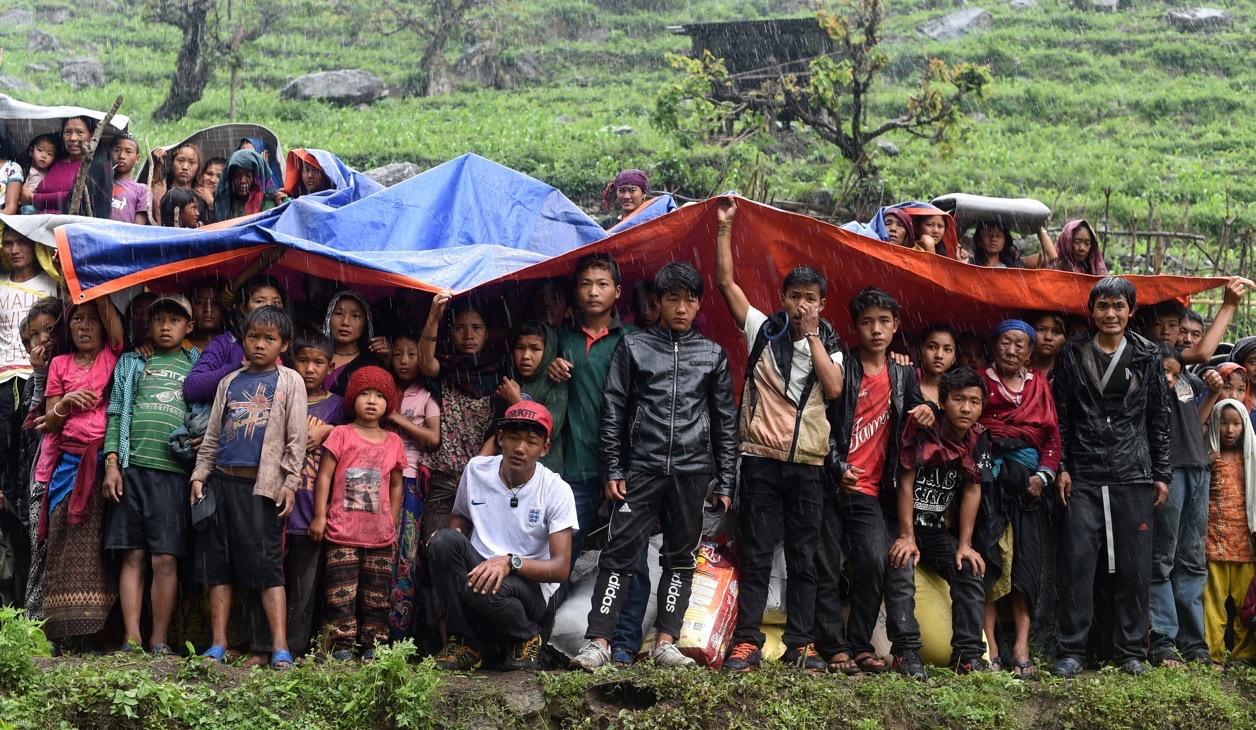Things might be about to get a whole lot worse in Nepal
Nepalese villagers shelter from rain under foam and plastic sheets in Gorkha on April 28, 2015.
KATHMANDU, Nepal — Just as the Nepalese emerge from the devastation wrought by a 7.8 magnitude earthquake, another potential disaster is looming: monsoon season.
Unlike the earthquake, everyone knows this one is on the way. And they are getting nervous. Already the rains are becoming more frequent. A Toyota dealership in Kathmandu has turned itself into a makeshift tarp factory, sewing together plastic tablecloths.
“There’s a desperation for people to be sleeping under something,” said Suraj Vaidya, who owns the factory. “What we understand is people have been sleeping out in the rain. It’s been raining quite a bit.”
Vaidya said the tablecloths are not a long-term solution and hoped they would be replaced with heavy-duty tarps or even actual roofs sooner than later. But that might not happen before the worst of the monsoon rains arrive next month.
More from GlobalPost: Villages just hours from Kathmandu are still waiting desperately for aid
The torrential rains that drench the country every summer will likely add significantly to the misery of the many thousands — at least 2.8 million people have been displaced by the earthquake — who are now without permanent shelter.
Worse still, the rains could unleash deadly landslides across the mountainous region. The spread of disease is also a threat as whole communities crowd beneath whatever shelter they can find, making it easy for sickness to spread. The earthquake destroyed most latrines, forcing people to defecate in the open. Health experts are worried that water contaminated by feces will create an outbreak of cholera.
“Now it is not raining much,” said Ranjaman Tamang, who lost his house in a landslide during the earthquake. “But after a month, it will start to rain, and it will be a big problem. We don’t know what to do.”
Marin Clark, a geomorphologist at the University of Michigan, warned in a statement this week that the earthquake unsettled much of the ground in Nepal, leaving many areas at high risk for landslides.
Clark used satellite imagery to evaluate the risks in the areas hit by the quake. “The satellites looked first at places where lots of people live, including Kathmandu and the foothills areas to the south," Clark said. "Those areas do not look significantly impacted by landsliding, but we're worried about the high country.”
Last year, a landslide northeast of Kathmandu killed 156 people.
“The earthquake only started the problems for the people. Probably what we’re looking at down the line is in 50 days to two months, you’re going to have the monsoons come in heavy.” Vaidya said. “With the soil being loose, there’s going to be a lot more landslides. That’s going to be a huge problem for a lot of us.”
The monsoon season will also put more pressure on recovery efforts. The rains usually have a crippling effect on the country, making many roads impassable.
“We are racing against time because of the monsoons. We have a 4 to 6 week window before the monsoon comes and if we have not brought in the food and other non-food items that are required, we will have an even greater problem with those who have lost their homes,” said World Food Program Executive Director Ertharin Cousin in Kathmandu on Sunday. “We have a lot of work to do.”
Meteorologists are predicting that this year’s monsoon will be lighter than normal. But for thousands of people who lost everything and will endure the rains unsheltered, that isn’t much of a silver lining.
